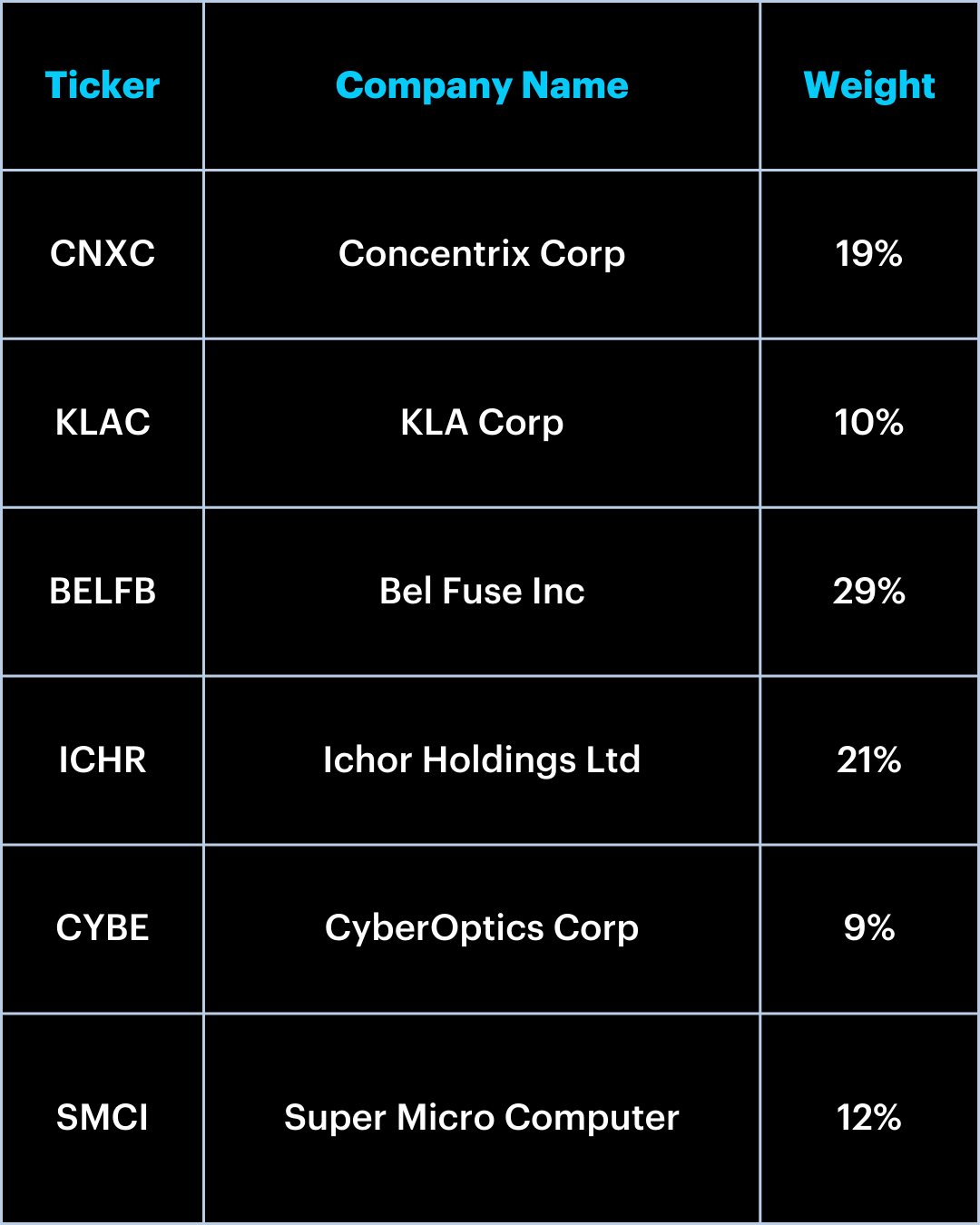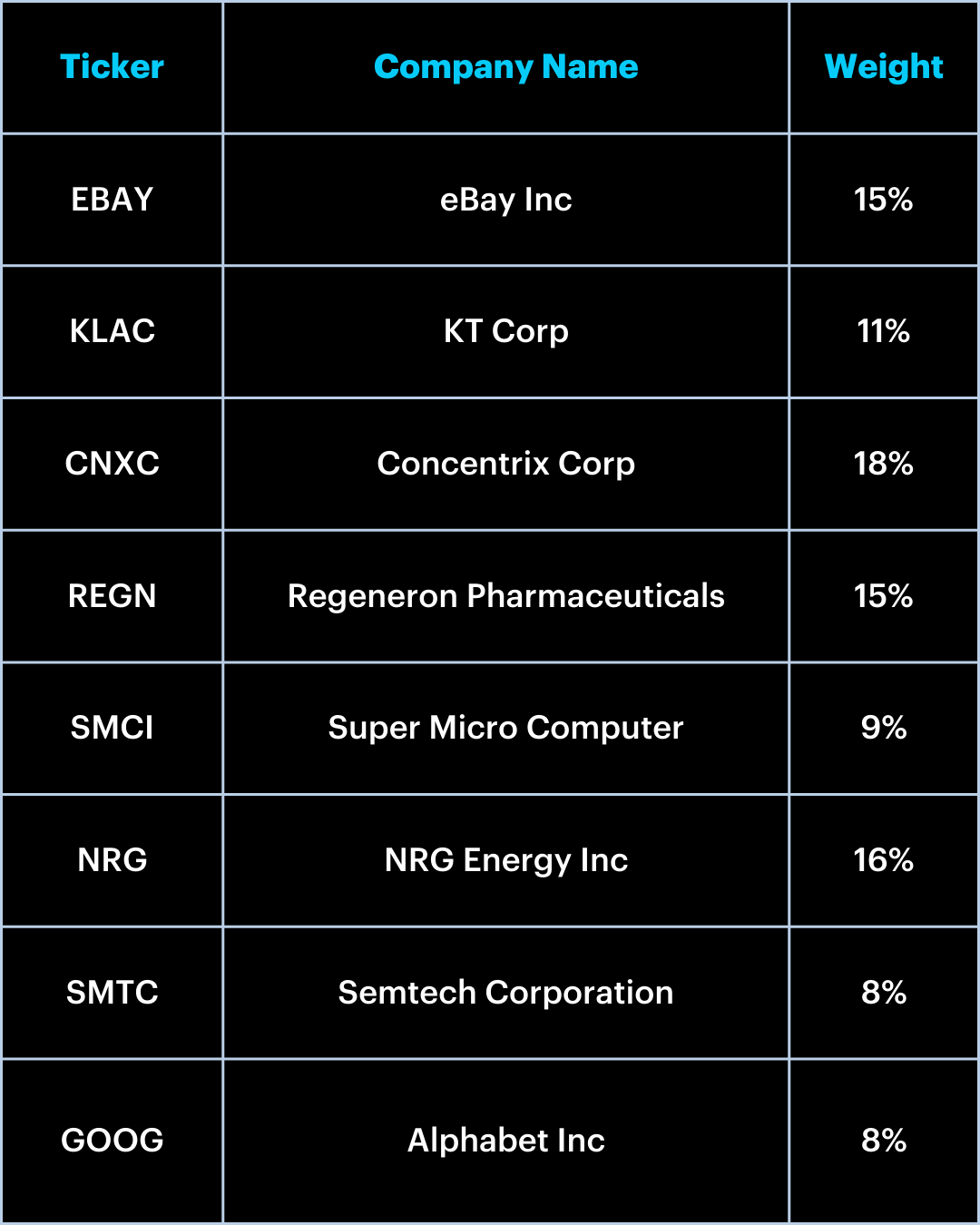
Flagship Tech Portfolio
Nov 02, 2022Welcome back to this month's update of the Moby Tech GARP Portfolio!
If you're familiar with this strategy please skip down to the section labeled, "Performance Overview".
If you're new to this portfolio strategy, its goal is to outperform the market by primarily investing in tech companies that are reasonably priced, while also taking on less risk! We do this by looking for companies with above-average earnings and revenue growth, but at normal valuations.
And similar to the last several months, if you missed the news, right now investors only care about companies that are growing responsibly and whose valuations are reasonable. Gone are the days when growth at all costs was an actual business strategy.
Nowadays, while growth is important, you need to grow "right". So that's why we have been looking for stocks that are growing but only at a reasonable price.
And every month this ideology only becomes more relevant as investors rotate further into companies that are growing their earnings base well. Look no further than the last few weeks of earnings where big tech has gotten pummeled but other smart names are doing well.
And while tech stocks might have gotten crushed over the last year, if you're looking in the right places there are still plenty of amazing opportunities and that's why our portfolio has continued to outperform the broader market (more on this below).
For a more in-depth explanation of how this strategy works, just read this post! By following the tried and true discipline of buying good companies at reasonable prices, we can maintain our confidence in our portfolio and ride out any storm.
So with that intro, today we're going to cover:
-
The portfolio's performance.
-
A macro overview.
-
The stocks that performed well and the stocks that didn't.
-
This month's trading updates.
Performance Overview:
In another crazy month for the market, our Flagship Tech Portfolio returned -1.32%!
While that may not sound thrilling, it actually is when we look at the Nasdaq over that same time period.
That's because the index returned --6.33%, giving us an absolute return of 5.01% over the market.
So what happened over the last month that caused this divergence? Well, the answer is mostly macro-based as there have been two major topics on all investor's minds. And that is earnings season and the Fed's interest rate policy.
-
Let's discuss earnings season first:
-
The general gist of earnings seasons has been that our thesis has continued to bust out of the gate. That's because when we look at companies like Amazon, Meta, etc., we see that their profitability is shrinking amidst a tough macro backdrop. However, on the contrary, other sectors like industrials and energy have done well because their profitability is increasing amongst the chaos.
-
Long story short, companies that are continuing to grow their earnings base are being rewarded and companies that are seeing profit margins slip are being decimated. Therefore in a strategy that optimizes for earnings growth, the target companies in our list helped us massively outperform the market.
-
-
Next, let's discuss Fed policy. But brace yourself, because this is going to be a rather long explanation.
-
In a rising rate environment, companies that are profitable today will do better than companies whose profits are projected into future periods -- which helps our strategy massively. But, why is this the case? Well, for the last decade the Fed's interest rate policy has been largely accommodative and therefore it hasn't been on the front page of the news as much. However, in the last year, the Fed has been raising rates in order to combat inflation. And in an environment where rates are increasing, it's tough for most stocks to truly do well. There are a handful of reasons why this is the case but the two largest are the way earnings are discounted and macro risks.
-
In the case of discounting future cash flows/earnings, companies are pretty much always valued based on how much money they generate. But when you compare companies like Chevron to a company that should do well in the future we get a mismatch on the timing of cash flows. For example, while a company like SpaceX may make more money than Chevron one day, those future cash flows are still years away. Therefore in order to understand what those cash flows are worth in today's dollars, investors use something called discounting. Basically, the theory suggests that a dollar today is not worth the same as a dollar tomorrow - aka money today is worth more than money in future years due to inflation and other factors. And while this principle has been true over the last 100+ years, it doesn't matter as much when interest rates are low. This is because at low-interest rates, the discounting isn't "felt" as significantly. However, in higher-rate environments, the discounting effect becomes stronger as you pull back future cash flows into today's dollars.
-
Let's draw a quick example: Imagine SpaceX made $0 today but is projected to make $100 in year 5. When you pull back year 5 cash flows into today's dollars, you essentially divide it by the interest rate. When rates were low the effect wasn't so significant but as they rise, the present value of these cash flows becomes worth much less -- making companies whose cash flows are in future periods, worth less in today's dollars.
-
Therefore heavy-growth companies like SpaceX won't get valued as well in a rising rate environment because their cash flows are worth less in today's dollars. And because their cash flows are worth less, their valuations (and therefore stock price) suffer.
-
-
-
And the second reason is due to macro risks. In a low-rate environment, economic growth is stimulated by debt. Aka risks are low and the cost of money is relatively cheap. Therefore companies will use debt to finance a lot of their operations. For example, the farming sector is financed by over $500B of debt. Farmers don't necessarily have the cash on hand to buy new tractors, seed, fertilizer, etc., so they use debt to finance their operations. And in an environment where rates are low, they don't mind paying the interest as much. But in an environment where rates are rising, they are less willing to take on debt and grow their operations because the cost of money becomes more expensive and eats into their profits. That's why companies that don't need to grow as much, like Chevron, can do better in a rising rate environment where their cash flows are stable and less subject to debt and any economic risks. And that's also why in a rising rate environment, many investors flock to safety as the risk of operating for high-growth companies just became that much riskier. SpaceX, for example, is a risky venture to begin with and is very capital-intensive. Therefore if you raise the price of debt for them or other high-growth ventures, the chance of their success shrinks that much more as they might not be able to fuel growth as easily as they once could!
-
-
The TL:DR version of this all is that rising rates hurt growth. That's why tech stocks have gotten crushed over the last year as investors have flocked toward safer options.
And that's also why we chose to roll out this strategy in the first place. We foresaw this coming and thought it was prudent to roll out a strategy that could take advantage of rising rates. So far our thesis has been correct and that's why we've been able to outperform the market while taking on less risk!
So with that high-level context finally out of the way, here's the performance of each stock in the portfolio!

Highlights:
-
Winners
-
The big winners this month were REGN & SMCI. So why did they do so well? We may sound like a broken record, but it was largely due to earnings growth. SMCI grew net income by 30% year over year while their EPS has sky-rocketed -- increasing by over 400%. Additionally REGN also did well because EPS and other profitability measures have been increasing. With their earnings set to be announced tomorrow, we're expecting this trend to continue.
-
-
Losers
-
The real notable loser this month was Google. In the case of Google, they're in an interesting position. While the stock's valuation has come back to earth, they're also projecting for a slowdown in profitability due to macro headwinds. Their business, more so than others on this list, is highly subject to these risks as in a recession, companies will spend less and less on advertising -- which directly affects their top & bottom line. While we love Google in the long run, right now isn't the perfect time for them to be in the portfolio and that's why the algorithm trimmed it this month.
-
New Portfolio:

Old Portfolio:

Portfolio Changes:
Outside of the change with Google, the other big changes this month come via BELFB, ICHR, & CYBE.
While we won't dive into all of them, they all display the same characteristics -- aka companies that are growing well and still fall within our valuation screen,
If there are any questions about any of the stocks in this portfolio or its methodology, just message us!

